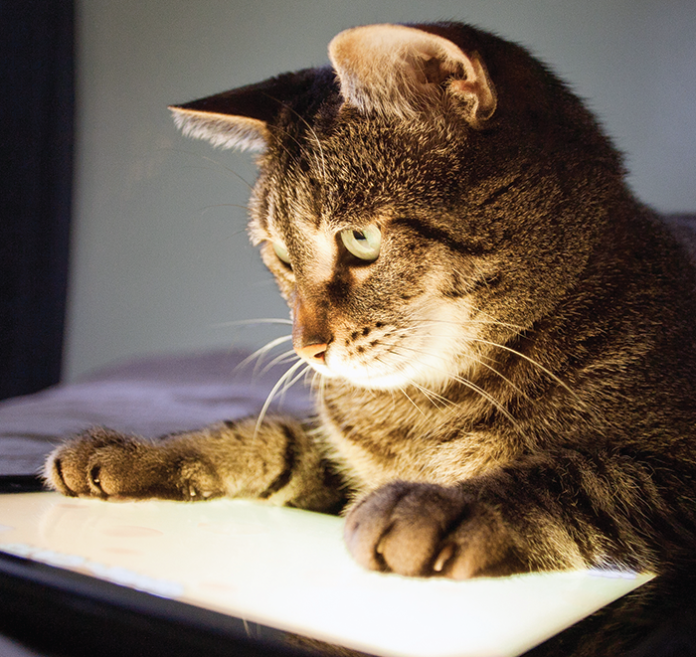Veterinary medicine has not been immune to the effects of the COVID-19 pandemic. In addition to curbside appointments, requiring masks, and sometimes reduced hours, veterinary hospitals are starting to embrace novel forms of telehealth and telemedicine to provide the best possible care for their patients without having to bring their owners into the hospital.
What Is Telemedicine?
The American Veterinary Medical Association (AVMA) has specific definitions for telehealth and telemedicine: “Telehealth is the overarching term that encompasses all uses of technology to deliver health information, education, or care remotely.” Even when your veterinarian is talking to you over the phone or posting reminders to pick up flea preventives on the hospital blog page, she is using telehealth.
“Telemedicine is a subcategory of telehealth that involves use of a tool to exchange medical information electronically from one site to another to improve a patient’s clinical health status,” says the AVMA.
Talking to your veterinarian over the phone is a basic form of telemedicine, but today some hospitals offer appointments and consultations through smartphone applications and over the internet. You may be able to send your veterinarian photos or videos of what you see in your cat or do a live video chat to allow your veterinarian to see exactly what your cat is experiencing in real time.
A variety of telemedicine and telehealth platforms are cropping up. Some of these apps and programs only provide general health information, while others enable you to communicate directly with your regular veterinarian through the program.
When Can Telemedicine Be Used?
There are some common scenarios in which telemedicine appointments and care work perfectly, and others where it is not a good fit. Common examples of when telemedicine is appropriate include:
- Discussing your cat’s diet or medications
- Follow-ups
- General wellness
- Hospice care
- Post-operative monitoring
- Triage after business hours
Obviously, a telemedicine appointment won’t work for treatments that need to be applied directly to your cat, including vaccinations, blood draws, x-rays, and surgery. Your veterinarian also won’t be able to palpate your cat’s abdomen or any suspicious lumps or sore joints. For anything requiring hands-on care, your cat needs to go to the veterinary hospital. But telemedicine can be a great option for your veterinarian to follow up on a treatment or to determine if the symptoms you are seeing require an emergency visit or can wait until regular business hours.
The Legal Stuff
The veterinarian-client-patient relationship (VCPR) is a crucial piece of veterinary medicine. In most states, veterinarians are required to have established this relationship with a client and patient before they can legally diagnose an illness or prescribe medications, whether in person or via telemedicine. For many states, establishing a VCPR requires at least one in-person exam for your pet and for you to sign a document stating that you give permission for the hospital to provide care for your cat.
Why is this important? If a veterinarian has never seen your cat before and you have never signed paperwork indicating your consent for the veterinarian to treat your cat, he or she likely cannot provide any advice or information specific to your cat’s needs. The AVMA says, “With the exception of emergency teletriage, including poison-control services, the AVMA opposes remote consulting, including telemedicine, offered directly to the public when the intent is to diagnose and/or treat a patient in the absence of a VCPR.” This sentiment is backed up by the legislation in most states. Providing a diagnosis or prescribing a medication without having a VCPR in place could cost the vet his or her veterinary license.
States may also require that any advice given via telemedicine be provided by a veterinarian licensed to practice in your state.
Telemedicine at Cornell
Cornell University Hospital for Animals is utilizing the program TeleVet, recommended by wired.com as their favorite telemedicine service. Cornell offers telemedicine appointments between 8 a.m. and 4 p.m. Monday through Friday in primary care, dermatology, sports medicine, nutrition, behavior, and exotics. For more information, visit tinyurl.com/CornellTeleVet.
The Cornell Feline Health Center also provides access to veterinarians through its Camuti Consultation Service. While this service cannot diagnose or make treatment recommendations, it can serve as a valuable source of information and support for cat owners. Visit https://www.vet.cornell.edu/departments-centers-and-institutes/cornell-feline-health-center/health-information/camuti-consultation-service for more information about this unique service.
Is Telemed Here to Stay?
Our society has grown increasingly dependent on technology and flexibility, making telemedicine an attractive option for many owners when their cats don’t require an in-person visit. While telemedicine will never replace in-person veterinary care, it does play a valuable role in making veterinary care more easily accessible to clients and less stressful for patients while allowing veterinary staff the flexibility to triage a patient from home to determine if the pet truly requires emergency care. We believe it is here to stay.




